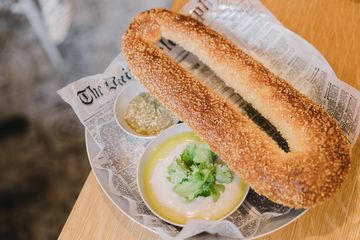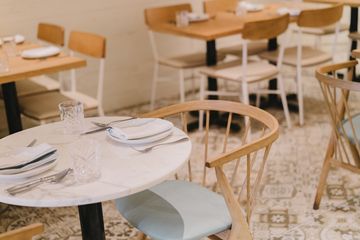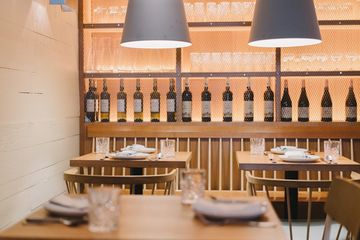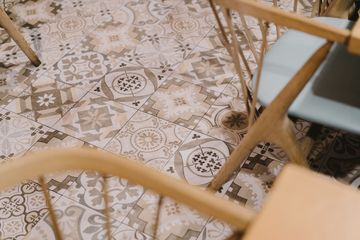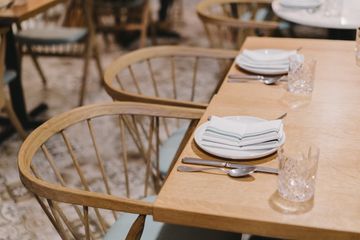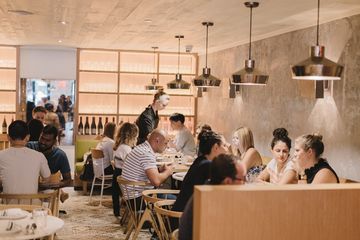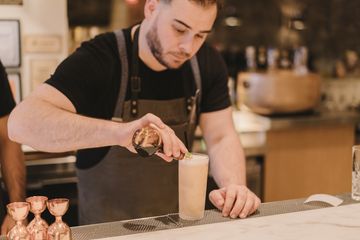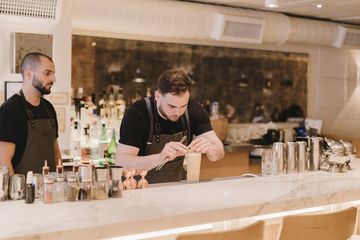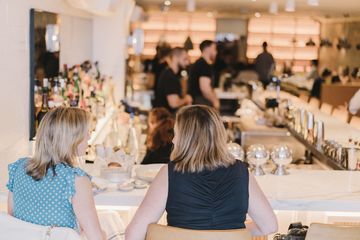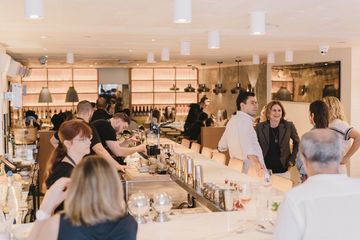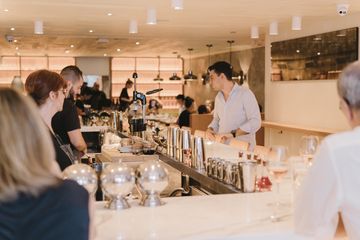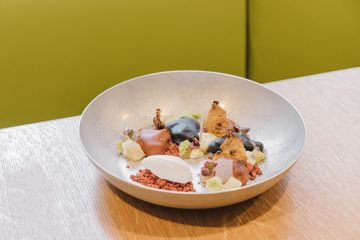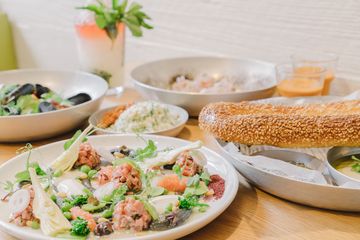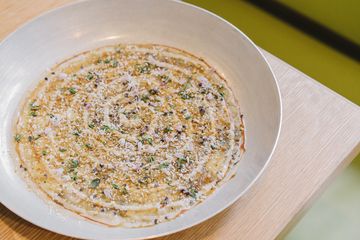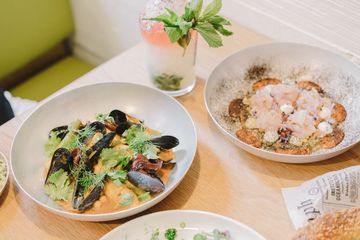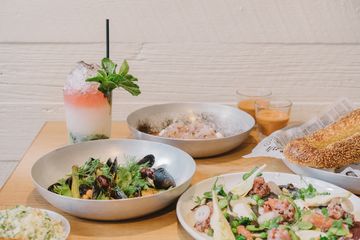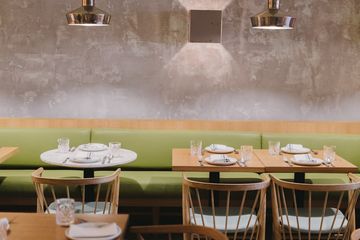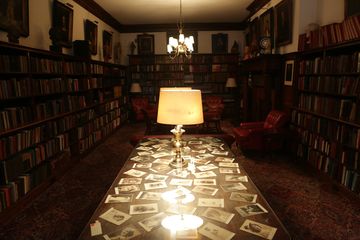
When Breads Bakery opened in 2013, Gadi Peleg began a love affair with the world of hospitality. "I loved feeding people and making them smile," he reflected as we sat around the high top tables in his recently opened restaurant, Nur. Gadi elaborated, saying that he has discovered a second passion. "Perhaps it is a bit selfish, but I love the walk from Breads to here." He allows himself the pleasure of wandering through the farmers market in Union Square before reaching his destination on East 20th. He has found a real connection with the neighborhood, and particularly 20th street.
"I wasn't looking to do anything else in hospitality, or in this neighborhood," Gadi admitted. "Honestly, it just happened. People approached me, and it all seemed to come together naturally." He described his meeting with Deb Polo, the former owner of County (where Nur now resides), who wanted out, and then, simultaneously, being introduced to the highly regarded Israeli chef, Meir Adoni, who was interested in opening a unique restaurant in Manhattan. Gadi said, "As soon as I stepped inside the space - while having Meir on my mind - I immediately realized that it all made sense." The space was cozy and a perfect fit for the kind of cuisine that they wanted to offer.
When I spoke to him in the early part of the summer in 2017, Gadi could not have been more pleased by the enthusiastic response that Nur had received since he opened only a few months prior. Chef Meir's menu reflects his Moroccan background, as well as his two Israeli restaurants in Tel Aviv. In New York, however, he has taken the typical street foods and strong flavors of the Middle Eastern markets and elevated them to haute cuisine, while presenting them in a relaxed, casual atmosphere.
Nur is unlike any other Israeli restaurant in the city. The concept involves using a classical French technique, but beautifully mixed with Middle Eastern spices. It is an interpretation of Meir's travels and culinary experiences over the years. He has introduced New York to a new category of food, which Gadi likes to refer to as, "Modern Middle Eastern - something brand new to the culinary world." Meir seems to have crafted a gastronomic language unique to him. There is no trace of the traditional falafel or hummus found on the menu, but one can find Fluke Kibbeh Nayeh with bulgur, harissa, yogurt, and black pepper Persian lemon powder. Served on the side is a shooter of creamy gazpacho. The wild black sea bass is presented with risotto, spring greens and an eggplant cream. The raw lamb is stuffed inside of a pita and then grilled to perfection. Gadi told me that this dish pays homage to the Palestinian cooks that have worked alongside Meir over the years. Spices prevail in every plate that comes out of the kitchen.
And then there is the bread. Unlike many restaurants, the bread takes center stage alongside the main courses. From the large, oval-sized Jerusalem sesame bagel served with za'atar and lima bean puree to the honey and garlic challah, each loaf reflects the clever concepts of the kitchen and is, of course, prepared at Gadi's renowned Breads Bakery on 16th Street.
Middle Eastern spices are even used in the alcoholic drinks, and Gadi is proud of the wine list, which features many bottles from the Middle East, helping to bring out the complexities of the food. The bar is situated towards the front of the restaurant and invites guests to walk in off the street and find a seat. Danielle Praport, the PR and marketing person behind all of Gadi's endeavors, remarked that the bar scene is really fun. "It is nice to see patrons talking about the food they are eating, and we are finding that more and more are choosing to sit and eat at the bar."
Of course, Gadi is thrilled with the warm reception he has received from the neighborhood. "I want this place to be for New Yorkers. We are trying to bring something from abroad, but make it for us." What is most important to Gadi, however, (and as is the case in his bakeries around the city) is the staff he hires. "They are the focus of everything," according to Gadi. "I cannot do one thing in the way of food prep in the kitchen or run the front of the room, but what I can do is bring in the best people. Out of all the compliments that I receive, the ones that I appreciate hearing the most are either when a staff person comes and tells me that they love working here, or a dinner guest comments on the remarkable experience that they have had."
From the time that I spent at Nur, it was evident that Gadi has surrounded himself with a warm and dedicated team. When I mentioned this, Danielle quickly chimed in: "It is a really cool place to work." She told me that there is no one better to work for than Gadi. He even closed the restaurant over the July 4th weekend and rented a small house on the beach in the Rockaways so that his kitchen staff could have some down time. "Who does that?" Danielle asked. "He truly treats every employee as if they are the most special person in the room."
Gadi commented that every time he walks into Nur, he experiences a moment of joy. "It is very rare to be able to say that I wouldn't want to change a thing in this place." I was intrigued to learn that the building dates back to 1865. It even predates Teddy Roosevelt's house next door. Gadi went into detail on the interior: While speaking with Deb, the previous owner, he learned that she had traveled to upstate NY to find the reclaimed wood that was presently on the walls. Gadi knew that he did not want to remove it, but he and architect Anurag Nema decided that it needed to be given a coat of white paint. "We took it from the Swiss Chalet feel to something more Israeli. A stroke of genius." The flooring also represents a Middle Eastern design. Gadi and Anurag purchased five different tile patterns and laid them out so that almost none of them touch one another, creating a perfect effect - "not too fancy and not too finished."
There was no doubt in my mind after speaking with Gadi that he is passionate about his latest venture, but also so appreciative that Nur has been recognized by many in the city. "People try to put a restaurant into a compartment, but at Nur we have broken away from there." New York is the greatest place on earth to have a culinary adventure - one can find almost anything here, but how amazing to have a brand new experience on 20th Street.
